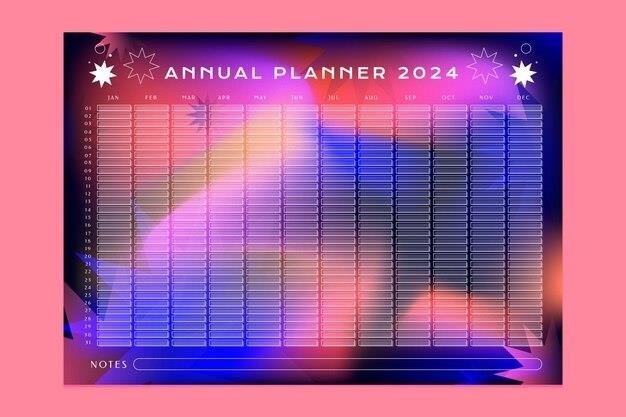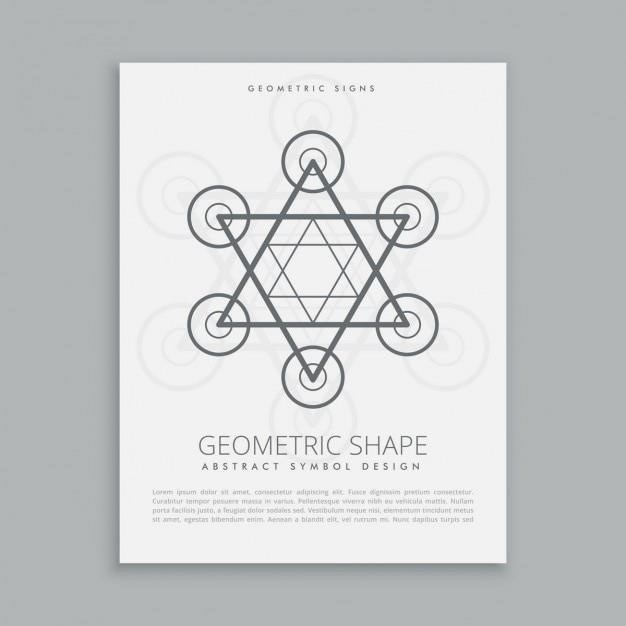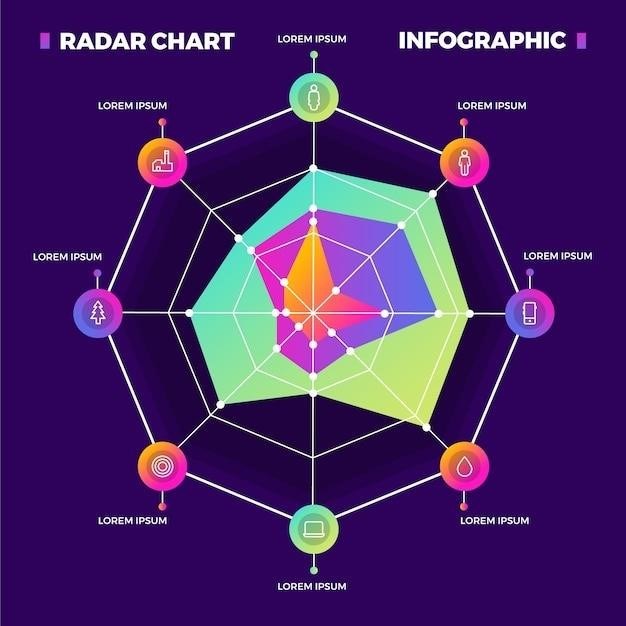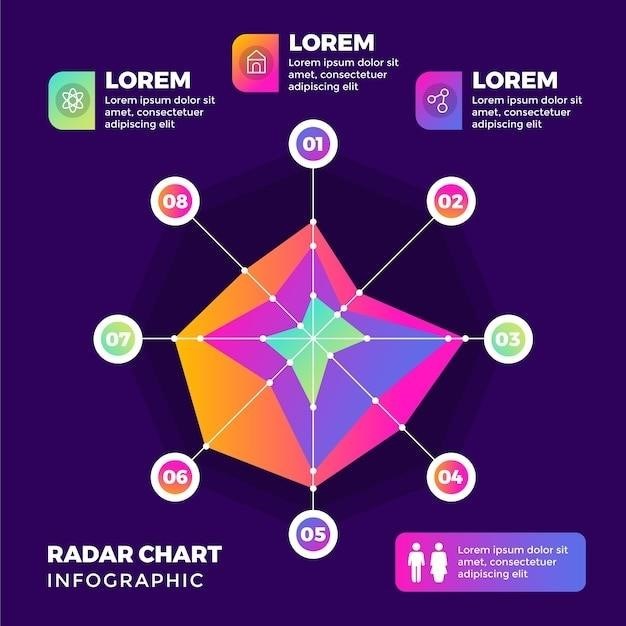Cost Accounting PDF: A Comprehensive Guide
This guide provides a comprehensive overview of cost accounting. It includes key concepts, methods, and techniques. Learn about fixed and variable costs, direct and indirect costs, and cost allocation. Explore job costing, ABC, and variable costing. Download the PDF for in-depth study.
Cost accounting is a specialized branch of accounting developed due to financial accounting limitations. It focuses on identifying, analyzing, and classifying cost components to facilitate informed business decisions. Cost accounting involves recording income and expenditure, ultimately preparing statistical data. It helps understand the nature, scope, and utility of cost, management, and cost accounting standards.
This field plays a crucial role in analyzing the interplay between cost, selling price, and profit. It enables the distinction between fixed and variable costs, aiding in pricing strategies during trade depressions. Cost accounting is the process of accounting for cost, providing a detailed and systematic view of goods or services’ costs. It addresses the need for better business decision-making, offering insights beyond traditional financial reporting.
The role of accountants in organizations is deeply intertwined with cost accounting. It is essential for budgeting, variance analysis, and management control. Cost accounting provides the foundation for understanding cost behavior and applying appropriate costing techniques. This introduction sets the stage for exploring the core principles and applications of cost accounting in modern business environments.
Nature and Scope of Cost Accounting
Cost accounting, at its core, is a specialized branch of accounting focused on the systematic recording and analysis of costs. Its nature is deeply rooted in providing detailed information that assists management in making informed decisions. The scope of cost accounting extends across various business functions, including production, marketing, and administration. It involves identifying, measuring, and reporting costs associated with the production of goods and services.
The scope includes cost determination, cost control, and cost reduction. Cost determination involves ascertaining the cost of products or services, while cost control aims at keeping costs within predetermined limits. Cost reduction focuses on continuously finding ways to minimize costs without compromising quality. Furthermore, cost accounting provides valuable data for inventory valuation and pricing decisions.
Its nature is also proactive, as it helps in planning and budgeting. By analyzing past costs, organizations can forecast future costs and develop strategies to improve profitability. Cost accounting is not merely a historical record; it’s a dynamic tool that supports strategic decision-making and operational efficiency. This broad nature and scope make cost accounting indispensable for effective management and sustainable business growth.
Utility of Cost Accounting
The utility of cost accounting is multifaceted, offering significant benefits to various stakeholders within an organization. Firstly, it aids management in making informed decisions by providing detailed cost information. This enables better pricing strategies, cost control measures, and resource allocation. Cost accounting helps in identifying areas of inefficiency and waste, allowing for targeted improvements.
Secondly, it facilitates effective budgeting and performance evaluation. By providing accurate cost data, organizations can develop realistic budgets and monitor performance against these benchmarks. This allows for timely corrective actions and improved operational efficiency. Cost accounting also supports inventory valuation, ensuring accurate financial reporting and compliance with accounting standards.
Furthermore, it assists in cost reduction efforts. By analyzing cost components, businesses can identify opportunities to minimize expenses without compromising quality. This leads to increased profitability and competitiveness. Cost accounting also plays a crucial role in strategic decision-making, such as product mix decisions and investment appraisals. Overall, the utility of cost accounting lies in its ability to provide valuable insights that drive efficiency, profitability, and sustainable growth. It empowers management with the knowledge needed to navigate complex business challenges and achieve organizational objectives effectively.
Cost Accounting vs. Financial Accounting
Cost accounting and financial accounting, while both integral parts of the accounting function, serve distinct purposes and cater to different user groups. Financial accounting primarily focuses on providing a standardized view of a company’s financial performance to external stakeholders such as investors, creditors, and regulatory bodies. It adheres to Generally Accepted Accounting Principles (GAAP) or International Financial Reporting Standards (IFRS) to ensure consistency and comparability across different organizations. The emphasis is on historical data, summarizing past transactions to create financial statements like the income statement, balance sheet, and cash flow statement.
In contrast, cost accounting is primarily an internal tool used by management to make informed decisions about production, pricing, and operational efficiency. It focuses on determining the cost of products, services, and processes within an organization. Cost accounting is not bound by GAAP or IFRS, allowing for more flexibility in methodologies and reporting formats. It emphasizes both historical and future-oriented data, using cost information for budgeting, forecasting, and performance analysis. While financial accounting provides a broad overview, cost accounting delves into granular details to support internal decision-making and improve overall business performance.
Objectives of Cost Accounting
The primary objective of cost accounting is to determine the cost of products, services, and processes accurately. This involves identifying, measuring, and assigning costs to various cost objects. Accurate cost information is crucial for pricing decisions, profitability analysis, and inventory valuation.
Another key objective is cost control. Cost accounting provides tools and techniques for monitoring and controlling costs, identifying areas of inefficiency, and implementing cost-reduction strategies. This includes budgeting, variance analysis, and performance reporting. By tracking costs closely, management can make informed decisions to optimize resource allocation and improve overall profitability.
Furthermore, cost accounting supports decision-making by providing relevant cost information for various business decisions. This includes make-or-buy decisions, special order pricing, and product mix analysis. Cost accounting helps management evaluate the financial implications of different alternatives and choose the most profitable option. It also facilitates performance evaluation by providing benchmarks for comparing actual performance against planned targets. Ultimately, the objectives of cost accounting are to provide accurate cost information, control costs effectively, and support informed decision-making to enhance organizational performance.
Cost Concept
The concept of cost is fundamental to cost accounting. Cost represents the resources sacrificed or forgone to achieve a specific objective. It can be measured in monetary terms, reflecting the value of inputs used in producing goods or services. Understanding different cost concepts is essential for accurate cost accounting and decision-making.

One important distinction is between direct and indirect costs. Direct costs are easily traceable to a specific cost object, such as materials and labor used in production. Indirect costs, on the other hand, cannot be directly traced and must be allocated to cost objects, such as factory overhead. Another key concept is the difference between fixed and variable costs. Fixed costs remain constant regardless of the level of production, while variable costs change in proportion to the level of activity.

Additionally, the concept of opportunity cost is crucial in decision-making. Opportunity cost represents the potential benefit forgone by choosing one alternative over another. By understanding these various cost concepts, businesses can make informed decisions, accurately assess profitability, and effectively manage resources. Cost accounting provides the tools and techniques to measure, analyze, and interpret costs, enabling organizations to achieve their financial goals.
Evolution of Cost Accounting
The evolution of cost accounting reflects the changing needs of businesses and the increasing complexity of economic environments. Initially, cost accounting was primarily focused on determining the cost of products for inventory valuation and financial reporting purposes. As businesses grew and became more complex, the need for more detailed and accurate cost information became apparent. This led to the development of various cost accounting techniques and methods.
Early cost accounting systems were often simple and relied on basic principles of cost allocation; However, as manufacturing processes became more sophisticated, the limitations of these systems became evident. The introduction of scientific management principles in the early 20th century led to the development of standard costing and variance analysis, which provided a more systematic approach to cost control.
In recent decades, the focus of cost accounting has shifted towards providing information for decision-making and performance management. Activity-based costing (ABC) has emerged as a popular method for allocating costs based on activities performed within an organization. This approach provides a more accurate understanding of the cost of products and services, enabling businesses to make better decisions about pricing, product mix, and process improvement. The evolution of cost accounting continues to adapt to the changing needs of businesses, incorporating new technologies and techniques to provide valuable insights for effective management.

Costing, Cost Accounting and Cost Accountancy

Understanding the nuances between costing, cost accounting, and cost accountancy is fundamental in the realm of managerial finance. Costing, in its simplest form, is the technique and process of ascertaining costs. It involves determining the expenses incurred in producing a product or providing a service. This can be done using various methods, such as job costing or process costing, depending on the nature of the business.
Cost accounting, on the other hand, is a broader term that encompasses the principles, methods, and practices of costing. It involves not only determining costs but also recording, classifying, and analyzing them. Cost accounting provides a systematic framework for tracking and managing costs, enabling businesses to make informed decisions about pricing, production, and profitability;
Cost accountancy is the most comprehensive of the three terms. It includes costing and cost accounting but also extends to the interpretation and presentation of cost information for managerial decision-making. Cost accountancy involves the application of costing and cost accounting techniques to provide insights into cost behavior, cost control, and performance evaluation. It plays a crucial role in strategic planning and helps businesses achieve their financial goals; In essence, costing is a technique, cost accounting is a practice, and cost accountancy is a profession.
Key Concepts in Cost Accounting

Cost accounting relies on several fundamental concepts to provide a clear understanding of costs and their impact on business operations. These concepts form the bedrock of cost analysis and decision-making. Among the most important are fixed costs, which remain constant regardless of production volume, and variable costs, which fluctuate directly with production levels. Understanding the difference is crucial for cost-volume-profit analysis.
Direct costs are those easily traceable to a specific product or service, such as raw materials and direct labor. In contrast, indirect costs, like factory overhead, are not directly traceable and must be allocated. Cost allocation is a systematic process of assigning indirect costs to cost objects, ensuring that all costs are accounted for.
Another key concept is cost-volume-profit (CVP) analysis, which examines the relationship between costs, volume, and profit. CVP analysis helps businesses determine the break-even point and the impact of changes in costs or volume on profitability. Job costing, used for unique or custom products, tracks costs for each individual job. Activity-based costing (ABC) assigns costs based on activities performed, providing a more accurate cost allocation than traditional methods. Finally, variable costing, also known as direct or marginal costing, only includes variable costs in the cost of goods sold, offering a different perspective on profitability. These concepts are essential for effective cost management.
Fixed Costs
Fixed costs are a fundamental element in cost accounting, representing expenses that remain constant regardless of changes in production volume or sales activity within a relevant range. These costs do not fluctuate with the level of output, making them predictable and relatively stable. Examples of fixed costs include rent, salaries of permanent staff, depreciation on equipment, insurance premiums, and property taxes.
It’s important to note that while total fixed costs remain constant, the fixed cost per unit decreases as production volume increases. This is because the same fixed cost is spread over a larger number of units. Understanding fixed costs is crucial for cost-volume-profit (CVP) analysis, break-even point calculations, and pricing decisions.
Businesses leverage fixed cost information to determine the minimum level of sales needed to cover all fixed expenses. Effective management of fixed costs can significantly impact a company’s profitability. While fixed costs provide stability, they also present a risk. If sales decline, a company must still cover its fixed costs, potentially leading to losses. Therefore, careful planning and monitoring of fixed costs are essential for financial stability and sustainable growth.
Variable Costs
Variable costs are those expenses that change in direct proportion to the level of production or sales volume. Unlike fixed costs, which remain constant regardless of output, variable costs increase as production increases and decrease as production decreases. Common examples of variable costs include direct materials, direct labor, sales commissions, and shipping expenses.
Understanding variable costs is critical for several aspects of cost accounting and managerial decision-making. Businesses use variable cost information to determine the profitability of individual products or services. Variable costs are also essential in cost-volume-profit (CVP) analysis, which helps companies understand the relationship between costs, volume, and profit.
Furthermore, variable costing, also known as direct costing or marginal costing, is a method of inventory valuation that only includes variable manufacturing costs in the cost of goods sold. Fixed manufacturing overhead is treated as a period expense. This approach provides a clear picture of the incremental cost of producing each additional unit, which is valuable for pricing decisions and evaluating the financial impact of changes in production volume.
Effective management of variable costs can significantly improve a company’s profitability and competitiveness.

Direct Costs
Direct costs are expenses that can be easily and directly traced to a specific cost object, such as a product, service, department, or project. These costs are directly attributable to the production or delivery of the cost object and can be accurately measured and assigned. Common examples of direct costs include raw materials used in manufacturing a product and the wages of assembly line workers directly involved in its production.
Identifying and tracking direct costs is crucial for accurate cost accounting and decision-making. Direct costs play a significant role in determining the cost of goods sold (COGS) for a manufacturing company. By accurately measuring direct material and direct labor costs, businesses can calculate the true cost of their products and make informed pricing decisions.

Furthermore, direct costs are often used in performance evaluation. Managers can be held accountable for the direct costs incurred within their departments or projects. By monitoring direct costs, companies can identify areas where costs can be reduced or controlled, leading to improved efficiency and profitability.
In contrast to indirect costs, which must be allocated, direct costs provide a clear and straightforward view of the resources consumed by a specific cost object, making them essential for effective cost management.
Indirect Costs

Indirect costs, unlike direct costs, cannot be easily traced to a specific cost object. These costs are incurred for the benefit of multiple cost objects and are not directly attributable to any single product, service, department, or project. Indirect costs are often referred to as overhead costs and are essential for the overall operation of a business.
Examples of indirect costs include rent for a factory building, utilities, depreciation of equipment, and salaries of administrative staff. These costs support the production or delivery of multiple products or services and cannot be directly linked to any specific item.
Because indirect costs cannot be directly traced, they must be allocated to cost objects using a reasonable allocation base. Common allocation bases include direct labor hours, machine hours, or square footage. The allocation process involves assigning a portion of the indirect costs to each cost object based on its usage of the allocation base.
Accurate allocation of indirect costs is crucial for determining the total cost of products or services. However, it can be challenging due to the arbitrary nature of the allocation process. Different allocation methods can result in varying cost assignments, impacting pricing decisions and profitability analysis. Therefore, businesses must carefully select allocation bases that accurately reflect the consumption of indirect resources by each cost object.
Cost Allocation
Cost allocation is the process of assigning indirect costs to cost objects. These cost objects can be products, services, departments, or any other segment of a business. Since indirect costs cannot be directly traced to a specific cost object, cost allocation methods are used to distribute these costs in a fair and reasonable manner. The accuracy of cost allocation is critical for making informed business decisions.
Several methods can be used for cost allocation. The direct method allocates costs directly from service departments to production departments without considering any services provided between service departments. The step-down method allocates costs sequentially, starting with the service department that provides the most services to other service departments. The reciprocal method recognizes all services provided among service departments and uses a system of simultaneous equations to allocate costs.

The selection of an appropriate cost allocation method depends on the complexity of the organization and the nature of the services provided. The goal is to allocate costs in a way that reflects the consumption of resources by each cost object. An inaccurate allocation can lead to distorted product costs, incorrect pricing decisions, and ineffective performance evaluations. Therefore, businesses should carefully evaluate their cost allocation methods and ensure they are aligned with their operational structure and strategic objectives.
Cost-Volume-Profit Analysis
Cost-Volume-Profit (CVP) analysis is a crucial tool in cost accounting that examines the relationship between costs, volume, and profit. It helps businesses understand how changes in these factors affect their profitability. CVP analysis is used for various purposes, including setting prices, determining break-even points, and making decisions about product mix and sales volume.
The break-even point is a key concept in CVP analysis, representing the sales level at which total revenues equal total costs, resulting in zero profit. CVP analysis also involves calculating the contribution margin, which is the difference between sales revenue and variable costs. The contribution margin ratio, calculated by dividing the contribution margin by sales revenue, indicates the percentage of each sales dollar available to cover fixed costs and generate profit.
CVP analysis relies on several assumptions, including constant sales prices, linear cost and revenue functions, and a constant sales mix. While these assumptions may not always hold in reality, CVP analysis provides valuable insights for decision-making. By understanding the relationships between costs, volume, and profit, businesses can make informed decisions about pricing, production levels, and marketing strategies. This analysis is particularly useful in budgeting and forecasting, allowing companies to assess the potential impact of various scenarios on their bottom line.
Job Costing
Job costing is a cost accounting method used to determine the cost of producing unique or custom-made products or services. It is commonly employed in industries where each project or job is distinct and requires specific resources. In job costing, costs are tracked and accumulated separately for each individual job. This allows businesses to accurately determine the profitability of each project and make informed decisions about pricing and resource allocation.
The job costing process involves identifying and assigning direct materials, direct labor, and overhead costs to each job. Direct materials are the raw materials that are directly used in the production of the job. Direct labor represents the wages and benefits paid to workers who are directly involved in the production process. Overhead costs include all other indirect costs that are necessary for the production of the job, such as rent, utilities, and depreciation.
Job cost sheets are used to track all costs associated with a particular job. These sheets provide a detailed record of the materials used, labor hours worked, and overhead costs allocated to the job. Once the job is completed, the total cost is calculated by summing up all the costs recorded on the job cost sheet. Job costing is essential for businesses that need to accurately track the costs of individual projects and ensure that they are pricing their products or services appropriately. It also provides valuable information for managing costs and improving efficiency.
Activity-Based Costing (ABC)
Activity-Based Costing (ABC) is a costing method that identifies activities within an organization and assigns the cost of each activity to products and services based on actual consumption. Unlike traditional costing methods that allocate overhead costs based on volume measures like direct labor hours, ABC focuses on the activities that drive costs. This approach provides a more accurate and detailed understanding of the true cost of products and services.
The ABC method involves several steps. First, identify the major activities performed in the organization, such as order processing, machine setup, and quality control. Second, determine the cost of each activity by assigning resources used to perform the activity. Third, identify cost drivers, which are factors that cause the activity costs to change. For example, the number of orders processed might be a cost driver for order processing activity. Finally, assign the cost of each activity to products or services based on their consumption of the activity.
ABC offers several benefits over traditional costing methods. It provides more accurate cost information, which can improve pricing decisions and product mix analysis. It also helps identify areas where costs can be reduced by focusing on activities that consume significant resources. Furthermore, ABC can support better decision-making related to process improvements, resource allocation, and performance measurement. By understanding the true cost of activities, organizations can make more informed decisions to enhance profitability and efficiency.
Variable Costing (Direct, Marginal Costing)
Variable costing, also known as direct costing or marginal costing, is a method of inventory costing in which only variable manufacturing costs are treated as product costs. Fixed manufacturing costs, on the other hand, are treated as period costs and are expensed in the period they are incurred. This approach contrasts with absorption costing, where both variable and fixed manufacturing costs are included in product costs.
Under variable costing, the cost of a product includes direct materials, direct labor, and variable manufacturing overhead. Fixed manufacturing overhead, such as factory rent and depreciation, is not included in the cost of the product but is treated as an expense in the period. This means that the cost of goods sold and inventory values only reflect the variable costs of production.
The primary advantage of variable costing is that it provides a clearer picture of the cost-volume-profit relationship. Because fixed costs are treated as period costs, the impact of changes in production volume on profitability is more transparent. This can be particularly useful for internal decision-making, such as pricing, production planning, and performance evaluation. Variable costing is also often favored for its simplicity and ease of understanding compared to absorption costing. However, it’s important to note that variable costing is not generally accepted for external financial reporting purposes under GAAP or IFRS.















